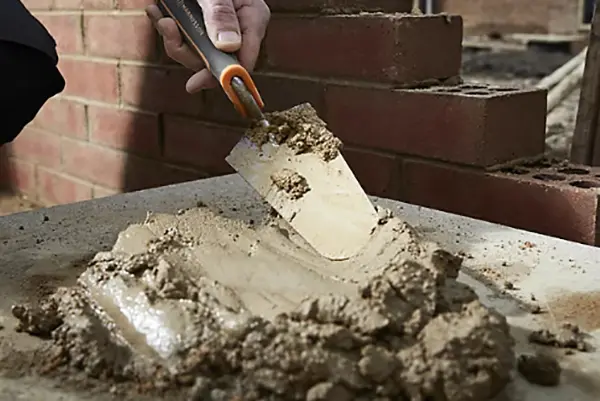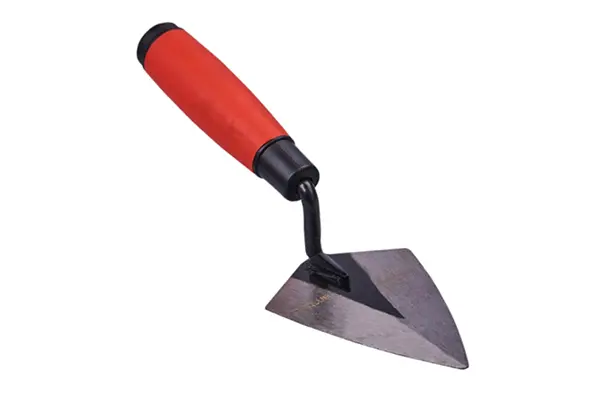Trowels are essential tools for masonry and other construction work, allowing skilled craftsmen to apply, spread, and shape materials like mortar and plaster. Among the various types of trowels, two commonly used ones are the gauging trowel and the pointing trowel. While they may look similar to the untrained eye, they serve distinct purposes and are designed differently to accommodate specific tasks. Understanding the differences between these trowels can help you choose the right one for your project and improve the quality of your work.
1. Gauging Trowel: Design and Purpose
A gauging trowel is a versatile tool with a rounded, pointed blade that is typically 5 to 7 inches long. The blade is usually made of tempered steel, which provides strength and durability, while the handle is ergonomically designed for a comfortable grip. The gauging trowel is primarily used for mixing small quantities of mortar, plaster, or other materials. It is also ideal for applying these materials to surfaces in a controlled manner.
Key Features of a Gauging Trowel:
- Blade Shape: The rounded, pointed blade allows for precise mixing and application, especially in tight spaces or when a small amount of material is needed.
- Versatility: It is suitable for a variety of tasks, including patching small holes, filling gaps, and applying thin layers of material.
- Mixing Capability: The size and shape make it easy to mix materials on a hawk or in a small container without making a mess.
The gauging trowel is named after its role in gauging, or measuring out, small amounts of materials. Because of its compact size, it’s perfect for detailed work where precision is required. It is especially useful in decorative plastering and when working in confined spaces where larger tools would be impractical.
2. Pointing Trowel: Design and Purpose
A pointing trowel, on the other hand, is a smaller, narrower tool with a sharply pointed blade, usually about 4 to 6 inches long. The blade is also made from tempered steel for strength, but it is typically narrower and more pointed than a gauging trowel. Pointing trowels are specifically designed for fine detail work in masonry, such as filling joints with mortar between bricks or stones, or when applying small amounts of mortar in tight spots.
Key Features of a Pointing Trowel:
- Blade Shape: The pointed, triangular blade is perfect for reaching into narrow joints and corners, making it ideal for precision work in bricklaying and stonework.
- Precision: It allows for fine control when filling and smoothing mortar joints, ensuring a clean, professional finish.
- Specialization: Unlike the more versatile gauging trowel, the pointing trowel is specialized for joint work, particularly in brickwork and stonework.
The pointing trowel gets its name from its primary function: pointing, which is the process of filling and finishing mortar joints in masonry. Its design allows for easy manipulation in tight spaces, making it an essential tool for any mason.
3. Differences in Use Cases
Understanding the differences in design between a gauging trowel and a pointing trowel highlights their distinct use cases.
- Gauging Trowel Use Cases: This trowel is best suited for tasks that require small amounts of material to be mixed and applied. It’s a great tool for patching work, where small holes or cracks need to be filled with plaster or mortar. The rounded blade also makes it ideal for applying thin layers of material to surfaces, such as when plastering a wall or ceiling.
- Pointing Trowel Use Cases: The pointing trowel is primarily used for detailed masonry work. It excels in filling and finishing mortar joints between bricks or stones, ensuring a neat and uniform appearance. The pointed blade allows for precision when working in tight spots, such as corners or narrow joints. It is also useful for repairs, where small amounts of mortar need to be applied with accuracy.
4. Choosing the Right Trowel for the Job
Choosing between a gauging trowel and a pointing trowel depends on the specific requirements of your project. If you need a tool for mixing and applying small quantities of materials, the gauging trowel is the best choice due to its versatility and ease of use. Its rounded blade makes it ideal for tasks that require spreading and smoothing.
However, if your work involves detailed masonry, such as filling joints or working in confined spaces, a pointing trowel is the better option. Its pointed, triangular blade provides the precision needed for these tasks, allowing you to achieve a clean and professional finish.
5. Conclusion
In summary, while both gauging and pointing trowels are important tools in the world of masonry and construction, they serve different purposes and are designed for specific tasks. The gauging trowel, with its rounded, versatile blade, is ideal for mixing and applying small amounts of materials, making it a go-to tool for various applications. The pointing trowel, with its pointed blade, is specialized for detailed masonry work, particularly in filling and finishing mortar joints.
Understanding the differences between these trowels will help you choose the right tool for your needs, ensuring that you can perform your work efficiently and achieve the best possible results. Whether you are a professional mason or a DIY enthusiast, having the right trowel in your toolkit is essential for success in any project.
Post time: Aug-27-2024








